An increasing number of gardeners give preference to parthenocarpic cucumbers, noting their productivity, good taste. Brought dozens of varieties recommended for cultivation in various regions of the country with different ripening dates. But in order to get the indicators stated in the descriptions, you need to thoroughly understand what parthenocarpics are, to study the features of cultivation, planting, care.
Content
What is parthenocarpic cucumbers
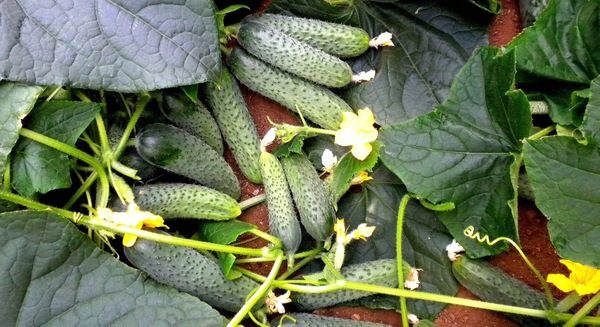
Traditionally, the process of tying Zelentsy in culture occurs with pollination, that is, the presence of female and male flowers, as well as pollinators, are necessary. With parthenocarpy, greenbacks form without pollination.
The formation of ovaries occurs without pollination, there are no seeds in the fruits, or there are very few of them. The size of the seeds is small, they are underdeveloped. On the one hand, this prevents Zelentsy from overgrowing and turning yellow, on the other hand, seeds of such hybrids of the first generation cannot be collected for subsequent planting.
A distinctive feature of parthenocarpics is either the complete absence of seeds, or they are very small and underdeveloped (see photo). Therefore, collecting seeds from such varieties is not possible. Seed material is obtained at specialized stations, in agricultural companies, artificially polluting the necessary parental forms of culture.
Hybrid hybrids were developed, as well as for cultivation in greenhouses, in beds. It is necessary to take into account the recommendations of breeders indicated in the description of a particular cucumber, to properly care for the plantings. If it is noted that the hybrid is hothouse, then it will show its maximum yield and taste indicators only in shelter, subject to proper care. It happens that plants planted in open ground gave slightly bitter pulp and deformed fruits. The explanation is simple: non-compliance with the rules of care, unsuitable growing conditions.
Advantages and disadvantages
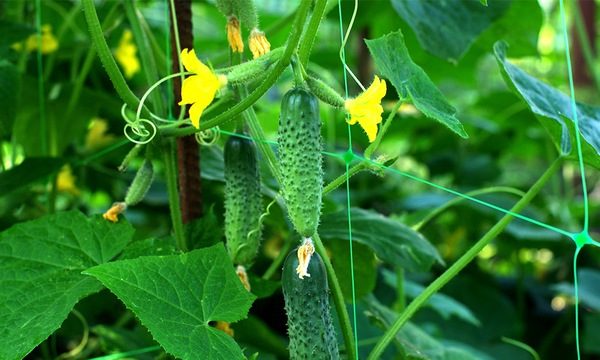
Parthenocarpic cucumbers are popular and gain more and more fans from among summer residents. Benefits:
- rapid plant growth;
- stable yield;
- profuse bearing;
- excellent taste characteristics;
- flatness of fruits;
- improved structure of pulp of greens, many hybrids have a characteristic cucumber crunch;
- long fruiting period;
- resistance to adverse weather factors;
- the universality of the use of greenhouses;
- long shelf life (the indicator depends on the specifics of a particular variety);
- flowering female cucumbers;
- increased immunity to disease.
When growing parthenocarpic type hybrids, the problem of empty flowers disappears, in most plants mainly female flowers are formed.This leads to higher yields, allowing small areas to collect a large number of fruits.
The variety of bred hybrids is another plus, as the summer resident can choose fruits with large and small tubercles, black or white spines, and various degrees of tuberosity. Many cucumbers are removed at the stage of gherkins, pickles, using for pickling, preservation.
Disadvantages:
- the need to buy new seeds every year;
- the high cost of hybrid novelties;
- mandatory formation of bushes is required: pinching, removal of excess leaves, elimination of thickened plantings;
- enhanced nutrition.
Among parthenocarpics there are many forms of the bundle type, forming in the sinuses several ovaries (from 2 to 12 or more). These species are characterized by increased fruit production, but require competent agricultural technology, compliance with planting rules, regular fertilizer application.
Popular varieties
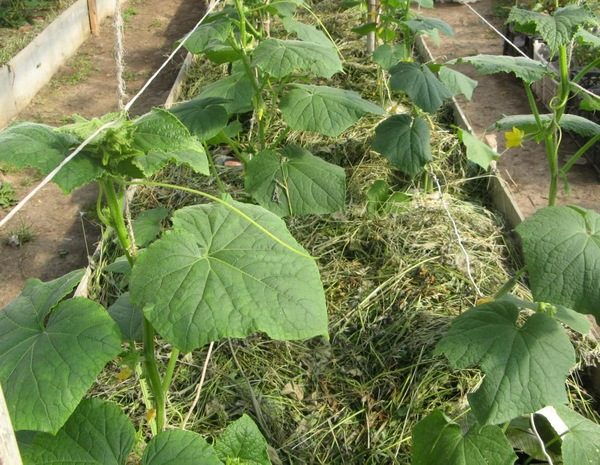
Dozens of hybrid parthenocarpic cucumbers with different characteristics are registered in the State Register. Gardeners also grow varieties that have not been registered, but have successfully proven themselves in practice.
Hybrid selection criteria:
- by maturity;
- according to the conditions of planting (in the beds, in shelters);
- according to the recommendations of zoning (adaptation to certain climatic zones);
- type of branching;
- use (only in salads, universal, for salting, pickles, preservation).
Varieties of cucumbers partenokarpikov for open ground
Presents cucumbers that are resistant to natural anomalies (heat, drought, low temperatures), adapted to low humidity, low light and others.
Among the popular:
- cucumber Canalia F1 - early, with bunch of ovaries (from 3 pieces), resistant to most diseases. Zelentsy are large-tuberous, with brown spikes, juicy crisp flesh;
- Connie F1 - mid-season (47-50 days), with a consistently high and long fruiting. Collect up to 14-16 kg per square meter. meter. Not susceptible to powdery mildew and root rot;
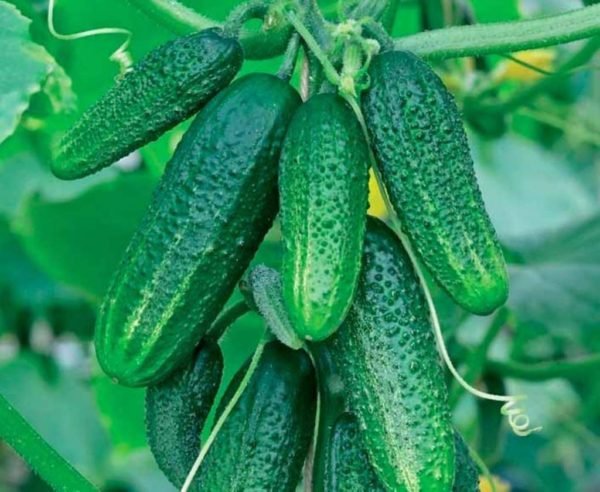
- Petrovsky - vigorous plants, form short coarse-humped white-thinned greens. Resistant to powdery mildew, cladosporiosis;
- Duet F1 is an indeterminate type of plants, characterized by strong climbing. Forms short cucumbers with large tubercles, excellent taste. Length - not more than 10-11 cm, indicator for the output of marketable products - 97%;
- Grandma’s secret - the hybrid forms salad-type cucumbers, which are often used for canning. In knots - up to three ovaries, length - up to 11 cm;
- early Athos hybrid - has an excellent fruit flavor. Zelentsy cylindrical, bright green with small stripes. They grow in length up to 10-12 cm, the skin is dense, with white pubescence with many small tubercles;
- Masha F1 - the first Zelentsy harvested already 36 days after emergence. Harvest, 11-13 kg of greens are collected from one square meter;
- Friendly family - mid-early hybrid (143-48 days). Great for pickles. Cucumbers weighing about 70-100 grams, dense, crispy. This cucumber bears fruit until the colds.
For shelters
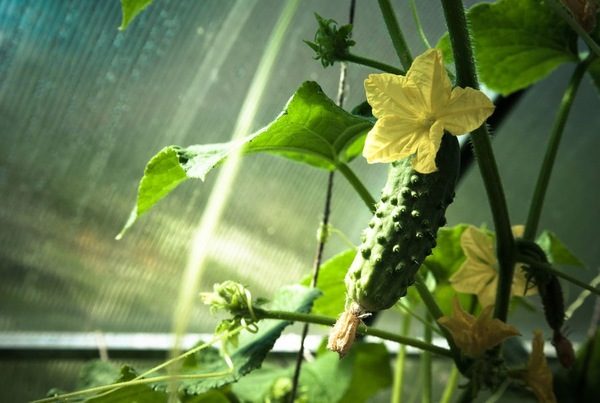 Initially, parthenocarpics were bred specifically for cultivation in greenhouse conditions. Therefore, the list of hybrid forms includes a huge number of species. Here are the most popular:
Initially, parthenocarpics were bred specifically for cultivation in greenhouse conditions. Therefore, the list of hybrid forms includes a huge number of species. Here are the most popular:
- cucumber Pyzhik F1 - up to 6-8 kg of green leaves are removed from one bush. The plant is tall, forms fruits about 70-100 grams with medium-sized tubercles and white pubescence;
- Uglich cucumber F1 - belongs to the group of early ripening hybrids, has a powerful root system, and strong leafiness. The ovary gives a "bouquet" of 5-6 pieces. Zelentsy are green, spiky, with a large number of tubercles. Weight - about 100-115 grams. Resistant to root rot, powdery mildew;
- cucumber Kucha mala F1 - medium-weed plants, with good regrowth of lateral shoots. Zelentsy aligned, with pronounced tuberosity, not prone to overgrowth. Length - 9-11 cm, the pulp is devoid of bitterness and voids, juicy and tender.
- Emelya is a very early (37-39 days) hybrid. The plant is an indeterminate species, vigorous, medium-branched. In the sinuses - bundles of 3-5 ovaries. The fruits resemble a spindle in shape, length - up to 13-15 cm. Yield indicators - up to 16 kg from one square meter of planting;
- early ripe Courage will please cucumbers for 40 days. In the sinuses, 4-8 ovaries are formed. Zelentsy without bitterness, slightly ribbed, juicy and tasty;
- The real colonel is a cucumber of universal purpose. At the nodes, the number of ovaries is up to 3-4, Zelentsy weak-ribbed, with white pubescence. The average length is 12-15 cm, the pulp is juicy, with a crunch. This variety is resistant to the cucumber mosaic virus, little affected by root rot and powdery mildew;
- Emerald stream - partenokarpik lettuce. The fruits are long, often curved, weighing up to 300 grams. The first gathering of greens - on 44-46 days
- Furor F1 - an early look, with sweet crispy cucumbers. Fruiting begins at about 37-39 days. The fruits of cucumber Furor F1 are tied in bunches, the number of ovaries in the sinuses is 3-5 pieces. From one "square" collect up to 16-18 kg of fruit;
Universal hybrids
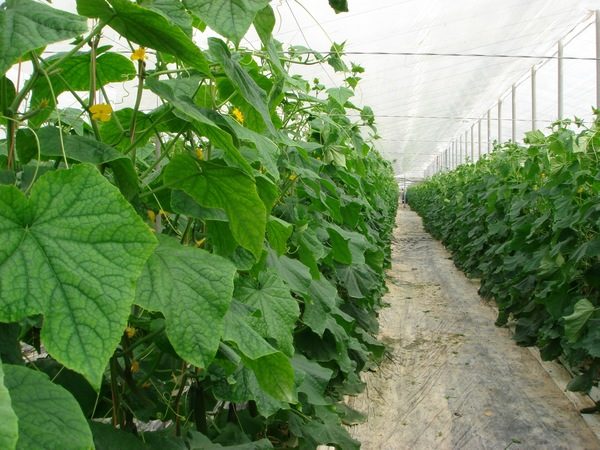
Suitable for growing in mini-greenhouses, hotbeds, in beds. They are distinguished by resistance to temperature changes, high fruit harvests.
Hybrids:
- cucumber Kuzya F1 - bred by the breeders of the Aelita agricultural company. It is considered one of the most ultra-mature hybrids, grows well in greenhouses, in beds. The first greenbacks are removed 38-40 days after emergence. Bookmark ovaries bouquet (3-5 pieces). The fruits are smooth, with white pubescence, without bitterness. Usage - preservation and marinades in the form of gherkins and pickles;
- Meva cucumber is a plant with fruits with smooth skin, grown mainly in winter greenhouses. Bred by breeders of the company Raik Zwaan (Holland). The plant is powerful, with intense growth power. The fruits are beautiful, 18-21 cm long, of good taste. In the open ground, abundantly bears fruit, is highly tied;
- Zircon F1 cucumber has a long harvest period. It well forms greens in open ground, little susceptible to infections. Fruits up to 11 cm long, saturated green color. The hybrid is considered one of the best for commercial production;
- Zabiyaka cucumber - from the Biotechnika company. Early parthenocarpic, characterized by a long period of fruit return, resistance to low light (shade tolerance). Zelentsy rare-tuberous, with white spikes. Fruit weight - up to 60-70 grams, length - not more than 8 cm. Use - fresh, salting.
Recommendations for growing parthenocarpic cucumbers
Hybrids of the form are grown taking into account the recommendations of manufacturers, climatic conditions of a particular area. Caring for parthenocarpic cucumbers is standard, but more attention is paid to the formation of bushes, fertilizing.
In the open ground
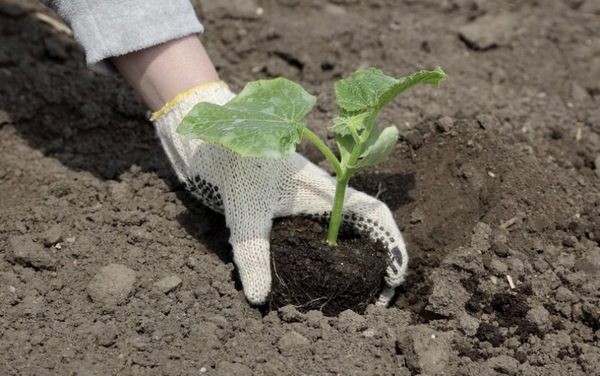
When planting parthenocarpics on ridges in the south, the seeds of cucumbers are immediately sown in open ground, in the middle lane, in the Northwest - seedlings are grown and only then seedlings are determined for a permanent place. For the southern regions, all hybrids are suitable, for temperate regions for exhaust gases, early cucumbers are selected that can catch the ridges in a short summer.
It is advisable to grow crops on trellises (pylons, netting), since when planting in a spread, productivity decreases, cucumbers are more often sick. To protect from adverse weather conditions, possible cooling, planting on ridges is covered with non-woven material (spunbond, lutrasil).
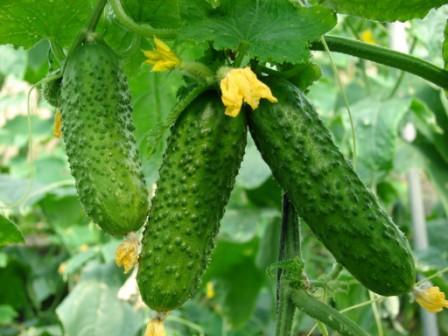 You may be interested in:
You may be interested in:Indoor
Parthenocarpic varieties of cucumbers successfully bear fruit at home. Varieties are selected, in the description of which it is indicated - for greenhouses, growing on window sillsbalconies.
Important features:
- ability to prolong fruiting (up to 4-5 months;
- parthenocarpy;
- lack of bitterness in the fruits.
Suitable hybrids:
- Marinda;
- Claudia
- Babylon (gives a crop even in low light);
- Tandem;
- Ointment;
- Window-Balcony;
- Indoor Rytov (one of the best hybrids for growing a house);
- Cucumber Brook.
For plants, a spacious container is selected, the volume is at least 5-7 liters. First, planted in pots or glasses, then gently transplanted to a permanent place.
Among the soil components, in addition to humus garden soil, there should be sifted and calcined river sand, ash, sawdust. Sowing dates are determined by growing conditions and the ability to provide adequate lighting. Without additional illumination, sowing is performed in February or March; cucumbers are sown with lamps all year round.
Tanks with plants are located on the southern windows (balconies), daylight should be at least 15 hours. In winter, control the temperature of the soil in the container, avoiding hypothermia of the roots.
The rest of the agricultural technology is standard: top dressing (2 times a month), the formation of bushes, irrigation and spraying (to create the necessary level of humidity). As supplements for home cucumbers, ready-made compounds Kristallin, Ideal, Fertika are suitable.
Indoors
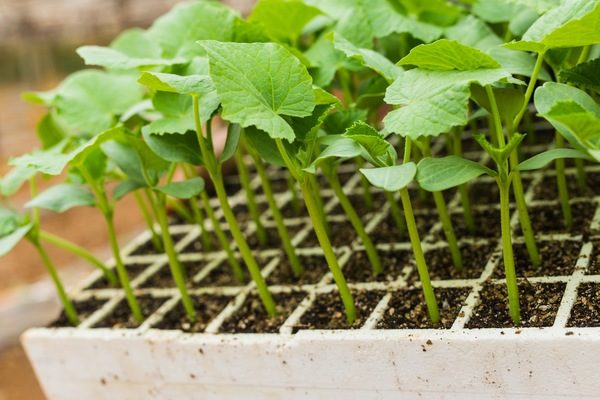
Parthenocarpics successfully grown in winter greenhouses with heating, in film and polycarbonate shelters without heating, in tunnels. Due to the ability to get a crop without the use of pollinators, the care of plants is simplified, the collection rates of greenhouses are increased.
In the greenhouses hybrids are planted with seedlings, sown seeds immediately in the ground, covering additionally for protection with a film or non-woven material. Seedlings are practiced by gardeners in most regions of the country, since in this case, the ripening time of green leaves is accelerated, the growing season is extended.
With seedling methods, cucumbers are sown in peat tablets or pots, plastic cups. Plants do not dive, as the culture is difficult to tolerate transplants, for a long time adapts to new conditions when the root system is damaged.
When planting cucumbers in greenhouses, they observe the distance between the holes (parthenocarpics love freedom), the growth and branching characteristics of each hybrid.
Agricultural technology of hybrids
The basic techniques of agricultural technology are standard for any method of cultivation:
- watering;
- loosening;
- weeding;
- fertilizer application;
- plant formation.
Only weeding falls from the list when growing parthenocarpic cucumbers at home.
Irrigation
After transplanting, the plants are not watered for about 4-7 days to adapt to new conditions. Further, before budding, they irrigate sparingly, preventing the soil from drying out.
During the fruiting period, watering is increased to 8-10 liters of water for each bush. They focus on the weather, often watered in the heat, not allowing the soil to dry out. The indicators of air humidity (in shelters) and soil are controlled. Cucumbers do not like excess moisture, they start to hurt. Hybrids are resistant to rot, but if watering standards are not followed, they can become sick.
To preserve moisture, use mulch. Use:
- straw;
- hay;
- humus;
- peat.
The roots of the plant are located close to the soil surface, so if not carefully cultivated there is a risk of damage. Mulch will protect against drought, waterlogging, save from weeds. Irrigation - in the morning, settled by warm (+ 20ºC) water. The maximum humidity in the shelter is 70%.
Feeding
The first time cucumbers feed 19-21 days after planting. Suitable organics: diluted mullein (1:10), bird droppings (1:20), mineral additives (ammonium nitrate, superphosphate). Top dressing is applied after irrigation, so as not to damage or burn the roots of the cucumbers. It is not allowed to introduce fertilizers containing chlorine (potassium salt, potassium chloride) under the culture.
When applying fertilizers, alternating organics with "chemistry", observing the dosage. From the second half of the growing season, priority is given to phosphorus-potassium supplements. During the harvesting period, the introduction of a solution of wood ash, potassium nitrate gives a good result. The frequency of top dressing is every 8-11 days.
The culture responds well to spraying on a leaf. Apply growth stimulants, compositions according to folk recipes (yeast, milk, iodine solution), which increase the number of ovaries and at the same time increase the immunity of plants
How to form parthenocarpic cucumbers
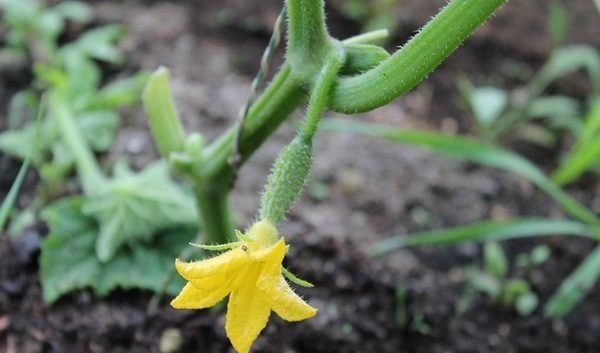
Without plant formation, hybrids do not show maximum yield. Inexperienced gardeners often make the mistake of leaving completely side lashes on the bushes. But the lateral shoots take a large share of food and moisture, so the green leaves are formed for a long time, can dry out and fall off.
Parthenocarpic features: the formation of flowers and ovaries on the main shoot. Therefore, they practice blinding in the lower tier. Approximate scheme:
- plucking flowers and ovaries in the first axils of the leaves (lower tier);
- up to 50 cm pinch shoots on one ovary and two leaves;
- at a height of half a meter to 1.5 meters, leave two ovaries and 2-3 leaves;
- pinch the shoot above the third leaf even higher and keep four ovaries on it.
Parthenocarpic cucumbers in a greenhouse and on ridges are grown on trellises. With this scheme of the inverted "pyramid" provides uniform fruiting of the hybrid, good illumination of plants, regulation of the load on the bush.
Disease Prevention and Treatment
Most parthenocarpic cucumbers are highly immune to infections, are little affected by pests. They rarely suffer from bacteriosis, are resistant to fungal infections. Most often, the appearance of diseases is associated with violations of the rules of care, improper watering, and the lack of prevention.
For treatments during cultivation, Phytolavin-300 preparations, Phytosporin fungicides, Gamair are recommended. Spraying plants with folk remedies helps against pests: ash (in infusions and dry form), tobacco dust, a mixture of bitter pepper and mustard powder.
Harvesting
Parthenocarpics - cucumbers with abundant fruiting. Therefore, with mass ripening, daily gatherings of greenhouses are recommended. Hybrids are resistant to overgrowing, many of them do not turn yellow, do not deform. But if you constantly delay the collection of fruits, the overall yield decreases, the number of ovaries decreases.
The more often the harvest (better every day or every other day), the faster the new fruits are formed and sung. Zelentsy are suitable for storage in a cool place, retain their taste and presentation until several weeks. In most parthenocarpics, the fruits are suitable for long transport.
Reviews
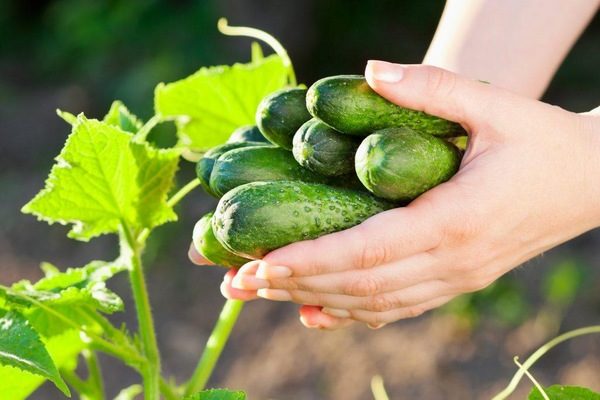
Catherine, Vologda Oblast
Refused to grow varietal cucumbers for a long time. I prefer parthenocarpic hybrids, which are easy to care for. Every year you have to buy seeds, but they are worth such expenses. I always have cucumbers in the garden, even in the bad season. I grow goosebumps, son-in-law, mother-in-law, every year I try new hybrids. But you need to correctly form the bushes, remove the extra shoots and part of the ovaries from below.And buy only from trusted manufacturers, otherwise market gardeners are often bred on the market, selling low-quality seeds or fake.
Olga, Leningrad Region
Only hybrids that do not need pollination grow in my greenhouse. On the beds, the grove and old, already proven cucumbers, for example, Advance, Murom, are covered with white covering material from above. Courage, Junior Lieutenant, Petrel are good for a greenhouse. Before buying, I read the descriptions, reviews, and I'm glad that I was not mistaken. An excellent crop of cucumbers grew last season. I do not particularly read the descriptions, age makes itself felt, not every time I manage to take good care of the landings. But with my approach, these cucumbers constantly bear fruit, it is not difficult to grow them, so as long as there is strength, I only plant them.
Parthenocarpic cucumbers are deservedly among the favorites of summer residents. Harvest, easy-to-care, unpretentious hybrids allow you to get excellent yields, even in areas of risky farming.

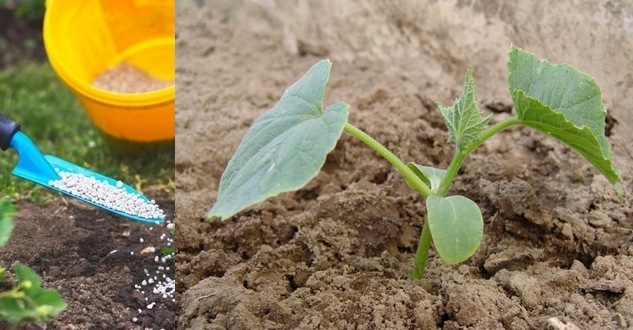
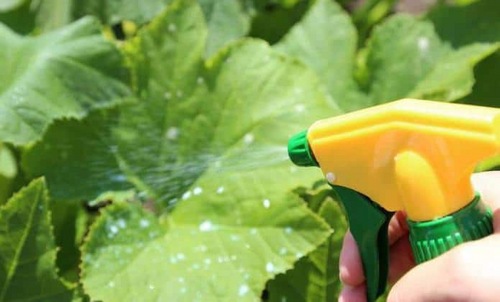
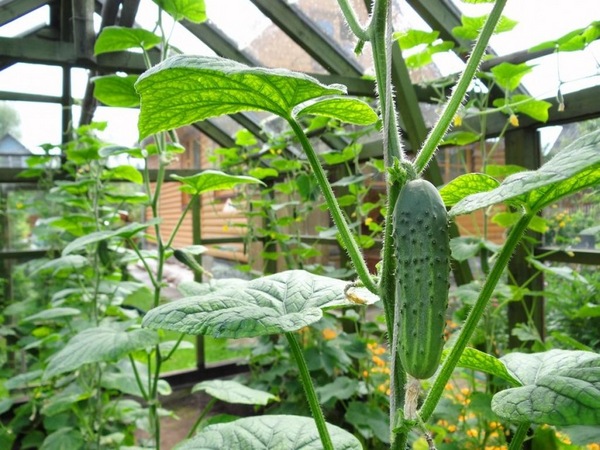
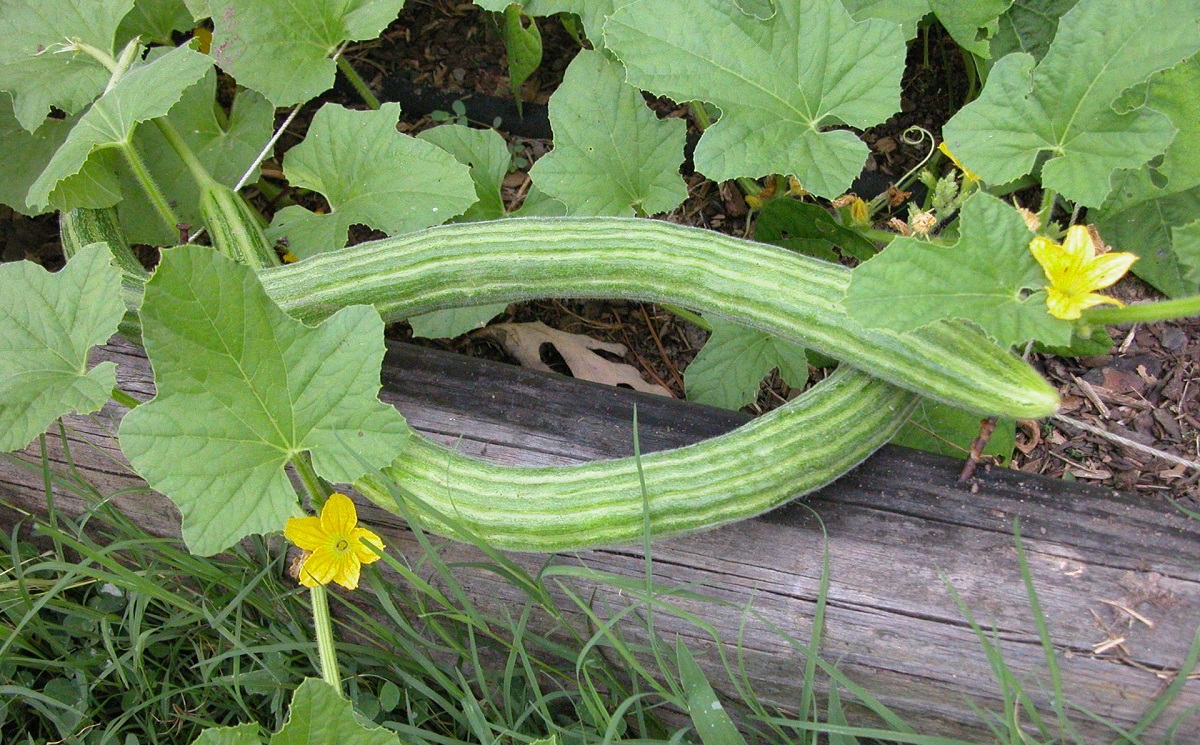 Armenian cucumber with melon flavor: description and characteristics, reviews
Armenian cucumber with melon flavor: description and characteristics, reviews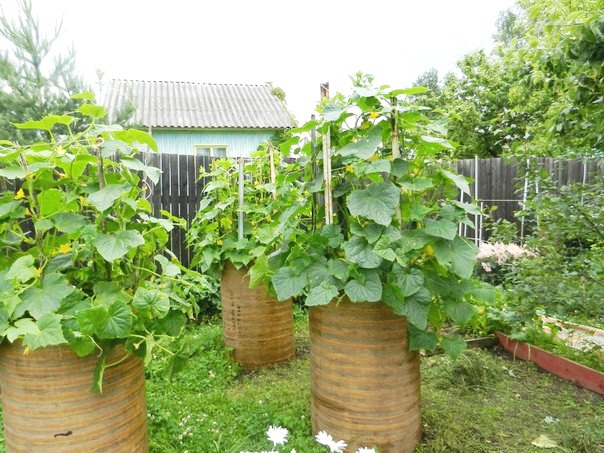 Do-it-yourself vertical beds for cucumbers: schemes, photos
Do-it-yourself vertical beds for cucumbers: schemes, photos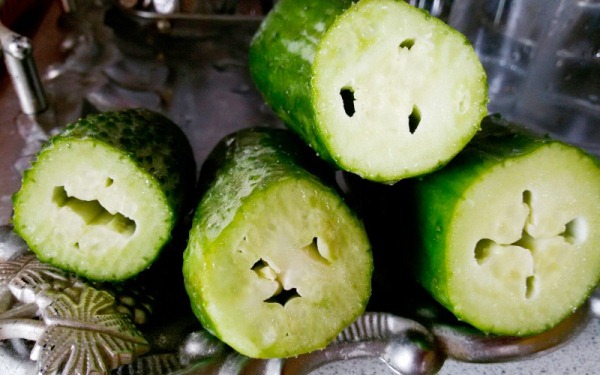 Hollow cucumbers: reasons for the appearance of hollow, what to do
Hollow cucumbers: reasons for the appearance of hollow, what to do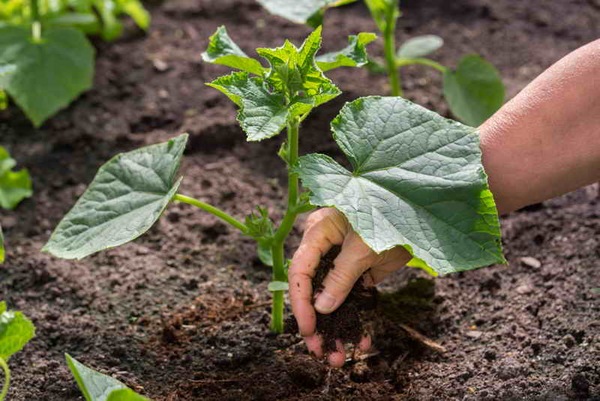 Which manure is best for cucumbers: application, how to breed
Which manure is best for cucumbers: application, how to breed